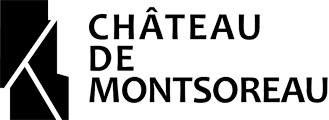Is poetry dead? What is the common point between « empty couple », « Olympic laziness », « bleating beast » and La Recherche du temps perdu? Has the advent of digital technology given rise to a new language?
Each in his own way, Etienne Candel and Nicolas Lelièvre divert, push and shape words. New, confusing and unstable universes are emerging. We thought we had said everything about Proust’s masterpiece. It was until Nicolas Lelièvre took it and proposed a brand new arrangement. We thought that the number of characters set by Twitter limited our exchanges to factual data. This was until Etienne Candel’s « ironies » flooded the canvas.
Professor of modern literature, graduate in comparative literature and French as a foreign language, eMMaNuel vasliN (@emmanuel_vaslin) is a keen observer of new approaches to language.
He will lead the meeting between Nicolas Lelièvre and Étienne Candel.
Meeting – dedication – glass / museum bookshop
Time: 4:30 pm – 6:30 pm
Free entrance
Ironèmes of Etienne Candel. It is a box that stores, on 47 metres of roll, some 900 texts taken from the continuous flow of writing that characterizes their author on digital networks. Étienne Candel produces these minimal alterations of language on a daily basis. Representing several tens of thousands of texts over a period of about six years, ironies proliferate as if in a permanent book of wild writings. Lapsus, wit, surprising diversions, false proverbs, amused manipulations, erroneous expressions, they divert language from its ordinary use and suggest another possible world, other meanings, other ways of seeing, as in dreams.
Derobbed from the flow and now kept in their box-book, the ironems thus published bring together the shape of the medieval roll and the contemporary scrolling of the screens. The editorial work is signed Peuple caché, a discreet collective, an activist for the renewal of formats.
Étienne Candel works in the margins: first as a poet on the free spaces of his Bachot notebooks, he explores the field of ironems and gradually theorizes their contours. He will soon publish a practical rehabilitation of garbage and bulky waste (Discourse on Waste, to be published by Surfaces Utiles, 2019). In his artistic approach, where he engages in dialogue between research and creation, he collaborates with graphic designers, painters and coders. He is currently preparing a catalogue and an impossible bestiary. https://ironemes.peuplecache.com
Twitter: @etienne_cdl
In the order of Nicolas Lelièvre presents the entire first volume of Marcel Proust’s À la Recherche du Temps Perdu, rearranged in alphabetical order. From the story, characters and situations only the raw material remains. Browse through this long list, however, offers a real visual experience through repetitions and typographical variations. Perfectly arbitrary, the ranking also produces new associations of ideas and sensations.
Research « in kit form », to look at rather than read, between literature and statistics. A plastic journey into the Proustian lexical field.
Nicolas Lelièvre, an architect who graduated in 2001, first focused on images. If urban spaces and the material of digital images remain among his favourite playing fields, it is a more global questioning of reality that makes his practice evolve with each project. Each proposal examines a specific fragment drawn from immediate reality and attempts to construct a thought to be experimented with. These visual, spatial or semantic detours call for photography, video, computer science, writing, object construction or in-situ intervention.
www.nicolaslelievre.com
